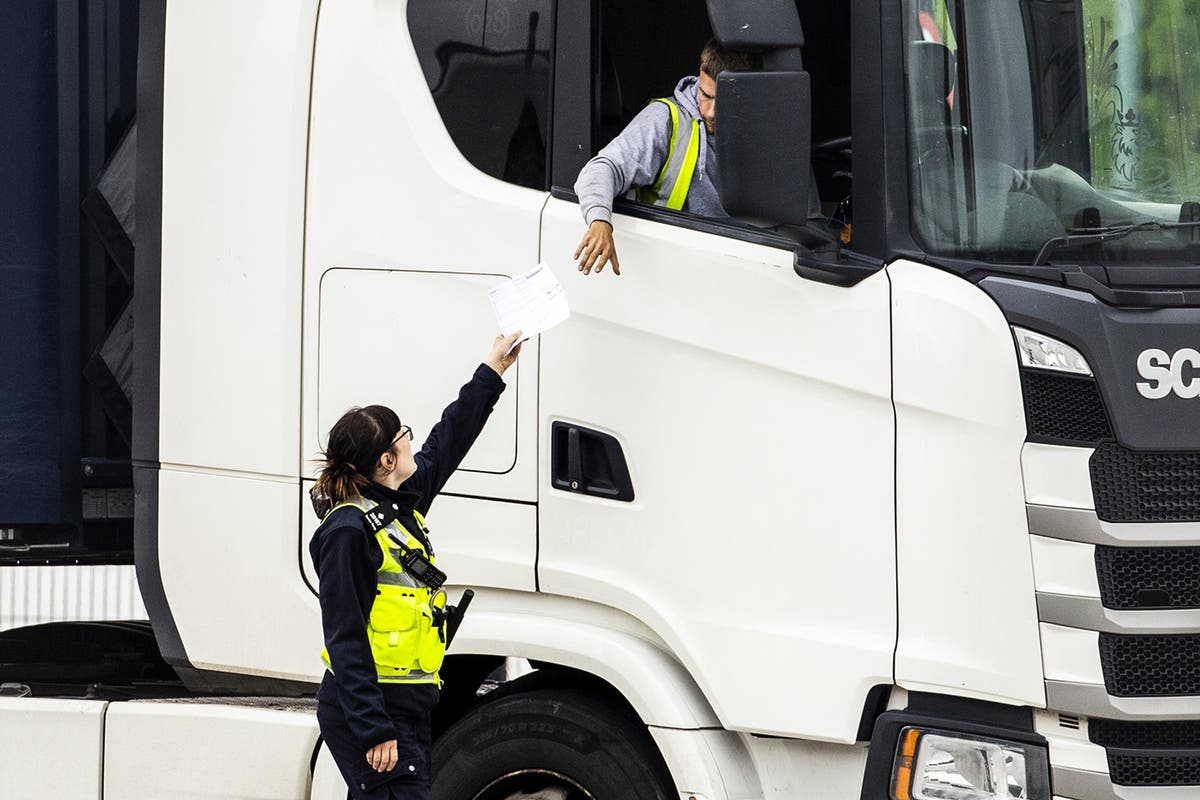Travel
EU to water down Brexit travel checks for British passengers as border plan delayed

EU plans for more stringent post-Brexit checks on holidaymakers entering Europe from the UK have been delayed again – with final plans also watered down over fears of long queues at borders.
The new approach sees rules around one key element of the entry-exit system – biometrics, where officials would take fingerprints and a photograph of a traveller’s face – loosened.
Passengers had been expecting to face the new Schengen Area border checks from 6 October. But The Independent has learnt the new launch date for the EES is Sunday 10 November – with a “last resort” option to postpone by a week to 17 November to ensure member states are ready.
The system has been repeatedly pushed back, having originally been due to launch in 2021. The European Commission has not confirmed the November date.
With the potential for travellers to be caught in queues at busy transport hubs, the scheme will now see the introduction of a “relief valve”, which will mean many people at crowded checkpoints could be excused biometric registration – fingerprints taken and a photo of the face – on first entry. This would significantly reduce delays.
Concerns have previously been raised about how the border checks will work, with some EU member states who have modelled the effects on airport immigration queues estimating that each passenger could take up to four times longer to process.
In January 2024, MPs were warned that Brits travelling to Europe could face waits of 14 hours or more at border control unless measures are introduced to prevent delays.
The latest delay to EES has been caused by concerns that not all nations are ready for the switch from manual to digital checks, as well as to avoid long queues of passengers in the October half-term exodus from the UK.
Christian Wigand, a European Commission spokesperson, said: “The roadmap for the delivery of the new IT architecture foresees that the entry-exit system will be ready to enter into operation in Autumn 2024 and that ETIAS will be ready to enter into operation in Spring 2025.
“The exact date will be determined by the European Commission and announced on the EES official website well in time for the start of operations. At the moment we do not have a date to communicate.”
British passport holders will be by far the most numerous group affected by the entry-exit system, which was initially developed before the Brexit vote.
Three locations in the UK have “juxtaposed” border controls, with French frontier police conducting checks: the Port of Dover, Eurotunnel’s Folkestone terminal and the Eurostar hub at London St Pancras.
They were designed with the assumption that British passport holders would only ever be subject to “light touch” checks. But after the UK chose to become subject to the much deeper requirements of EES, there have been fears of extreme queues at these locations as travellers are fingerprinted and photographed.
But the initial impact is set to be drastically reduced by easing the demand on collecting biometric information.
In “exceptional circumstances”, which have not been defined, as few as one in 10 travellers could have their fingerprints and facial biometrics taken.
Local immigration officials will decide the appropriate number of travellers subject to biometric registration, on a range of 10 to 100 per cent.
The EES has two aims:
- To automate checks on entering and leaving the Schengen Area, which will detect overstaying
- To enhance border security by registering fingerprints and facial biometrics of all third-country nationals crossing legally
Initially the plan was for a “big bang” approach. From day one, biometrics would be collected from every traveller on first arrival at any frontier of the Schengen Area (which includes Iceland, Norway, Switzerland and all EU nations except Cyprus and Ireland).
But that demand will be fudged – possibly for up to 18 months.
Speaking to The Independent on 11 July, Doug Bannister, chief executive of the Port of Dover, said “an element of precautionary measures” was involved in the launch of EES.
“They will be able to dial down the amount of intervention for registration if the queueing gets excessive. That’s going to available for all gateways into the European Union.
“Exactly how it’s going to work? We’re still working through that with our our French and European Union counterparts. But that is going to be an important relief valve as the process is first introduced.”
Transport operators from ferry firms to airlines have lobbied Brussels on the entry-exit system, calling for “urgent action” on several unresolved issues.
In particular they propose biometric data could be collected gradually during a 12-to-18-month transition period. They also say a “robust public communication campaign” is essential.
“The absence of these measures will seriously degrade traveller experience and carriers’ operations,” they have told EU officials.
After a traveller initially registers fingerprints and a facial biometric, for subsequent visits only one of these will be necessary – which is likely to be the facial biometric.
Once the entry-exit system is running, plans will go ahead for the Electronic Travel Information and Authorisation System (Etias).
This is an online “eurovisa” that will resemble the US Esta scheme. British passport holders will need to register online ahead of a visit and pay €7 (£6).
Again, the UK was involved in the initial proposals and then negotiated for the Etias system to apply to British travellers.










